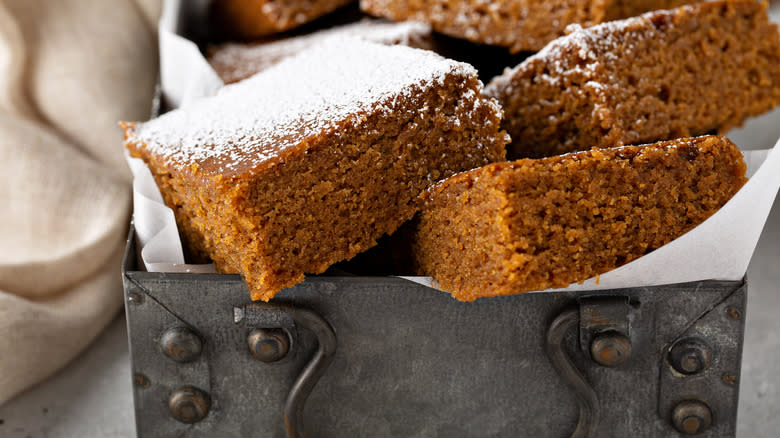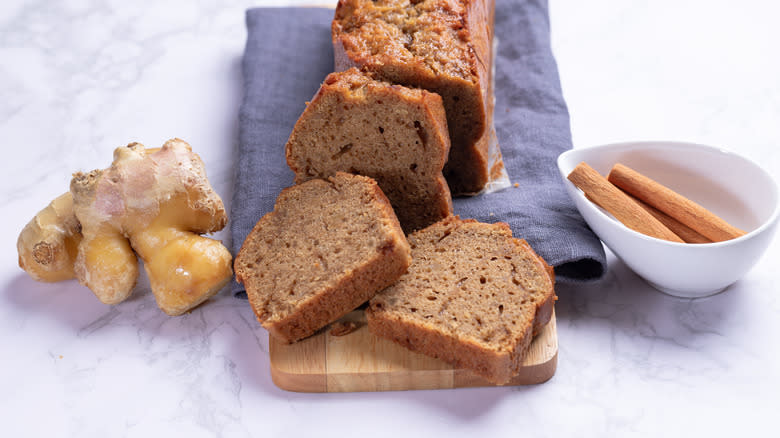The British History Of Traditional Yorkshire Moggy Cake

Sweet, soft, sticky moggy cake is an old regional favorite in Yorkshire, a county in Northern England. This treat is particularly popular in West Yorkshire, where the word "moggy" is also a regional colloquialism for a house cat, but the name is thought to have evolved from a non-feline etymological origin. It likely comes from the North Germanic Old Norse word "mugi," which can mean wheat, barley, rye, or oats. Still, no one seems absolutely certain from whence the comforting moggy cake was named — which is ultimately less important than the fact that this dessert has stood the test of time.
Moggy cake, which dates back at least to the 1800s, is a ginger-infused sponge cake not dissimilar in flavor profile to another Yorkshire classic, the the spicy and sweet trifle known as a parkin. The stiff, shiny, silky batter for a moggy cake combines butter, golden syrup (a prevalent baking ingredient in British confectionery stylings), black treacle, eggs, milk, flour, bicarbonate soda, and ginger. Ground ginger or stem ginger both work just as well. Traditional moggy cake recipes may omit the black treacle; Yorkshire home cooks of yore kept the golden syrup but swapped in margarine and lard for the moisture component.
After baking in a square cake pan or a loaf pan, the syrup-rich cake is carefully removed from the still-warm pan and wrapped in foil for multiple days to retain its moist, sticky texture. Like parkin, moggy cake becomes even stickier as it matures.
Read more: 30 Types Of Cake, Explained
Moggy Cake Is The Simple Sticky Treat Made For Sharing At Home

The interplay of the sweet-sticky syrup and the spicy ginger makes for an easy-to-make yet unusual and delicious treat, provided you can find all the ingredients you need. A canister of Brit-favorite brand Lyle's Golden Syrup lasts for three months after opening, though, so perhaps you'll end up making moggy cakes for an entire season. After all, it's a great way to get a taste of Yorkshire comfort food.
Today, moggy cake is commonly enjoyed as part of afternoon tea, or served topped with custard and enjoyed as a dessert pudding. Roasted rhubarb and stewed fruits are popular toppings. We'd like to think peaches would be extra delicious with the ginger, as well. Some folks sprinkle the tops of their moggy cakes with demerara sugar for a lightly crunchy finish. For an unforgettable English tea spread, call up a few good friends, and serve buttered moggy cake alongside cinnamon orange coffee cake and lemon blueberry scones.
Yorkshire's food scene incorporates more than just pastoral eats. As of 2024, the place nicknamed God's Own Country is home to eight Michelin-starred restaurants, showcasing the region's penchants for fishing and agriculture. For a gastronomic and cultural deep-dive, you could also try whipping up a Yorkshire barmbrack cake, especially if you can serve it with a slice of Wensleydale cheese. (Cue the American cheese and apple pie lovers.)
Read the original article on Tasting Table


